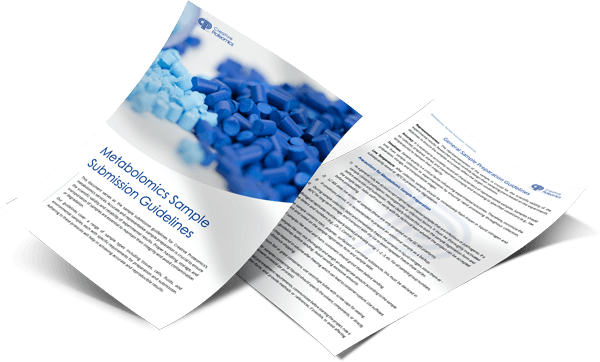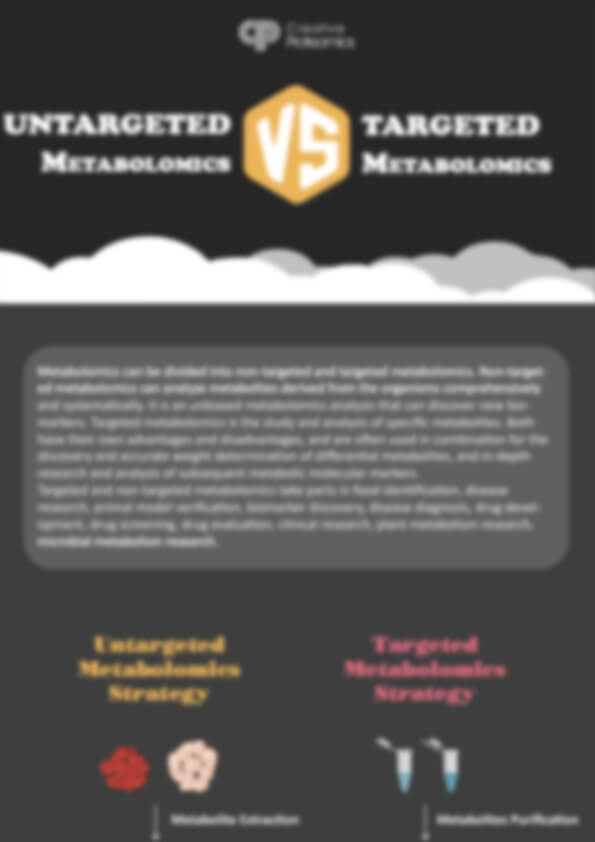Succinic Acid Analysis Service
Creative Proteomics offers high-precision succinic acid analysis for metabolic research, biotechnology, and industrial applications. Using advanced HPLC-MS/MS and GC-MS, we ensure rapid, reliable quantification of succinic acid and related metabolites in complex matrices. Our services overcome detection challenges, matrix interference, and derivatization delays, providing actionable insights for TCA cycle analysis, bioproduction optimization, and quality control. From pharmaceuticals to environmental health, we deliver accurate data to accelerate your discoveries.
Submit Your Request Now
×- What We Provide
- Advantages
- Technology Platform
- Sample Requirements
- FAQ
- Publications
What is Succinic Acid?
Succinic acid, chemically known as butanedioic acid, is a naturally occurring dicarboxylic acid with the molecular formula C4H6O4. It is widely distributed in both plant and animal tissues and plays a pivotal role in intermediary metabolism. Structurally, succinic acid appears as a colorless crystalline solid that is soluble in water. In biological systems, succinic acid is involved in key biochemical pathways, most notably in the citric acid cycle (also known as the Krebs cycle) where it serves as an intermediate. This cycle is fundamental to cellular respiration, facilitating the conversion of nutrients, such as carbohydrates, fats, and proteins, into energy-rich molecules like ATP (adenosine triphosphate). Succinic acid also acts as an electron donor in the electron transport chain, a series of redox reactions crucial for ATP production. Beyond its biological functions, succinic acid finds applications in various industries, including pharmaceuticals, food production, and agriculture, owing to its roles in chemical synthesis and its potential therapeutic properties.

Succinic Acid Analysis Service Offered by Creative Proteomics
- Succinic Acid Quantification – Precise measurement of succinic acid concentrations in various biological matrices.
- Metabolic Profiling – Comprehensive analysis of succinic acid and related metabolic intermediates.
- Pathway Analysis – Detailed insights into succinic acid's role within the TCA cycle and related metabolic pathways.
- Comparative Analysis – Evaluation of succinic acid fluctuations under different physiological and pathological conditions.
- Biomarker Identification – Detection of succinic acid as a potential biomarker for metabolic and mitochondrial disorders.
- Custom Method Development – Tailored analytical protocols to meet specific research and clinical needs.
- High-Throughput Screening – Rapid, large-scale analysis for biomarker discovery and pharmaceutical studies.
- Data Interpretation & Reporting – Comprehensive data analysis, expert consultation, and customizable report formats.
Detected Succinic Acid-Related Metabolites
| Metabolite Name | Biological Role/Pathway | Description |
|---|---|---|
| Succinic Acid | TCA cycle intermediate | Converts from succinyl-CoA and converts to fumaric acid, playing a key role in energy production. |
| Fumaric Acid | TCA cycle intermediate | Formed from succinic acid by succinate dehydrogenase, further converted to malic acid. |
| Malic Acid | TCA cycle intermediate | Participates in the malate-aspartate shuttle and is crucial for NADH production. |
| Citric Acid | TCA cycle starting molecule | Produced from acetyl-CoA and oxaloacetate, facilitating energy generation. |
| α-Ketoglutarate | TCA cycle intermediate | Converts to succinyl-CoA through oxidative decarboxylation, contributing to ATP production. |
| Succinyl-CoA | TCA cycle intermediate | Precursor of succinic acid, also involved in heme and ketone body synthesis. |
| Oxaloacetic Acid | TCA cycle and gluconeogenesis | Reacts with acetyl-CoA to form citric acid, essential for glucose and energy metabolism. |
| Succinate Semialdehyde | GABA metabolism, linked to TCA cycle | Formed from GABA degradation, further converted to succinic acid. |
| Glutaric Acid | Lysine and tryptophan metabolism | Elevated levels may indicate mitochondrial dysfunction or metabolic disorders. |
| Methylmalonic Acid | Vitamin B12 metabolism, linked to TCA cycle | Converts to succinyl-CoA; abnormal levels are biomarkers for methylmalonic acidemia. |
Advantages of Succinic Acid Assay
- Efficient Sample Preparation: Proprietary alkaline hydrolysis ensures >95% recovery from complex matrices, outperforming traditional methods.
- Derivatization-Free Analysis: Reversed-phase HPLC with indirect UV detection enables direct analysis without time-consuming derivatization.
- Multi-Matrix Compatibility: Accurate analysis across various sample types using advanced algorithms to mitigate matrix interference.
- Integrated Data Insights: Cloud-based bioinformatics tools offer real-time metabolic insights through multi-omics analysis.
- High-Throughput Efficiency: Automated GC-MS platforms ensure rapid processing of over 200 samples/day with<3% CV for consistent results.
Technology Platforms for Succinic Acid Analysis Service
HPLC-UV (High-Performance Liquid Chromatography with UV Detection)

Agilent 1260 Infinity II HPLC (Figure from Agilent)
GC-MS (Gas Chromatography-Mass Spectrometry)

Agilent 7890B-5977B (Figure from Agilent)
LC-MS/MS (Liquid Chromatography-Tandem Mass Spectrometry)

SCIEX Triple Quad™ 6500+ (Figure from Sciex)
LC-MS

Q Exactive™ Plus Hybrid Quadrupole-Orbitrap™ Mass Spectrometer (Figure from Thermo)
Sample Requirements for Succinic Acid Analysis Service
| Sample Type | Minimum Volume/Weight | Storage Conditions | Additional Notes |
|---|---|---|---|
| Serum/Plasma | 100 µL | -80°C | Collect in EDTA or heparin tubes; avoid hemolysis. |
| Urine | 500 µL | -80°C | Preferably first-morning urine; avoid preservatives unless instructed. |
| Tissue (Homogenized) | 50 mg (wet weight) | -80°C | Flash-freeze in liquid nitrogen immediately after collection. |
| Cell Culture Supernatant | 300 µL | -80°C | Ensure cells are free of contamination; collect at the desired time point. |
| Cerebrospinal Fluid (CSF) | 200 µL | -80°C | Collect aseptically; avoid repeated freeze-thaw cycles. |
| Feces | 50 mg | -80°C | Store without additives; snap freeze immediately after collection. |
| Saliva | 200 µL | -80°C | Rinse mouth with water before collection; avoid eating or drinking for 30 minutes. |
Applications of Succinic Acid Assay Service
Industrial Fermentation Optimization
Monitor succinic acid production in microbial fermentation for bio-based chemicals, improving yield and process efficiency.
Quality Control in Food & Beverage
Ensure compliance with regulatory standards by quantifying succinic acid levels in fermented foods, wines, and functional beverages.
Biodegradable Polymer Development
Analyze succinic acid as a precursor for bio-based plastics and resins, optimizing material properties and sustainability.
Environmental Monitoring
Detect succinic acid as a metabolic byproduct in wastewater and soil samples, assessing pollution levels and microbial activity.
Metabolomics & Systems Biology
Investigate succinic acid as a key metabolite in cellular energy metabolism and its role in adaptive responses to environmental stress.
Microbiome & Gut Metabolism Studies
Analyze succinic acid as a microbial metabolite to understand gut microbial activity, fermentation processes, and host-microbe interactions.
Demo
FAQ of Succinic Acid Analysis Service
How should microbial fermentation samples (e.g., Actinobacillus succinogenes cultures) be prepared for analysis?
For optimal results, microbial fermentation samples should be rapidly quenched with liquid nitrogen, followed by methanol extraction to halt metabolic activity. Please submit cell pellets in cryovials to preserve succinic acid stability during transport. Avoid repeated freeze-thaw cycles to prevent degradation.
What is the minimum detection limit for succinic acid in complex matrices like skincare products or nutraceuticals?
Our HPLC-MS/MS method achieves a lower limit of quantification (LLOQ) of 0.5 ng/mL, validated for challenging matrices such as anti-blemish serums and polymer-bound succinic acid formulations.
Can your analysis differentiate between free succinic acid and its esterified forms (e.g., in anti-aging creams)?
Yes, our method employs solid-phase extraction (SPE) combined with reverse-phase HPLC to separate free succinic acid from esterified derivatives (e.g., succinate esters), with recovery rates exceeding 90%.
How does your service handle interference from structurally similar compounds (e.g., glutaric acid)?
We use a dual-technology approach: HPLC with indirect UV detection (Shimadzu LC-40) ensures baseline separation of polar acids, and GC-MS with DB-5MS columns resolves co-eluting isomers. Cross-platform validation ensures false positives are reduced to less than 1%.
Are deuterated internal standards (e.g., succinic-D4 acid) used, and why?
Yes, we use succinic-D4 acid as an internal standard to correct for matrix effects and ionization efficiency variations in LC-MS/MS. Despite challenges in HILIC mode (e.g., background noise), our optimized protocols ensure isotopic purity of ≥95% and reliable quantification.
Can I receive raw data files for integration with third-party software like MetaboAnalyst?
Absolutely. We provide raw data files in formats such as .RAW (Thermo), .wiff (SCIEX), and .D (Agilent) that are compatible with major metabolomics platforms. We also offer pathway flux visualizations (e.g., TCA cycle) for more detailed analysis.
What distinguishes your GC-MS method from HPLC for succinic acid analysis?
GC-MS (Agilent 7890A/5975C) provides superior sensitivity for volatile derivatives (e.g., MSTFA-stabilized succinate) in environmental samples. HPLC-MS/MS, however, is preferred for heat-labile or polymer-bound analytes. We select the method based on sample type and the required detection limits.
How do you ensure reproducibility in high-throughput industrial analyses (e.g., bio-plastic QA/QC)?
We utilize automated batch processing via Agilent MassHunter software to process over 200 samples per day, achieving a coefficient of variation (CV) of less than 3%. The use of internal standards (e.g., deuterated analogs) and triplicate injections minimizes variability and ensures reproducibility.
Learn about other Q&A.
Succinic Acid Analysis Service Case Study
Publications
Here are some of the metabolomics-related papers published by our clients:

- A non-probiotic fermented soy product reduces total and ldl cholesterol: A randomized controlled crossover trial. 2021. https://doi.org/10.3390/nu13020535
- Resting natural killer cell homeostasis relies on tryptophan/NAD+ metabolism and HIF‐1α. 2023. https://doi.org/10.15252/embr.202256156
- Enhance trial: effects of NAD3® on hallmarks of aging and clinical endpoints of health in middle aged adults: a subset analysis focused on blood cell NAD+ concentrations and lipid metabolism. 2022. https://doi.org/10.3390/physiologia2010002
- Function and regulation of a steroidogenic CYP450 enzyme in the mitochondrion of Toxoplasma gondii. 2023. https://doi.org/10.1371/journal.ppat.1011566
References
- Scholz, Karen, et al. "Mass spectrometric characterization of siderophores produced by Pseudomonas taiwanensis VLB120 assisted by stable isotope labeling of nitrogen source." Biometals 31 (2018): 785-795. https://doi.org/10.1007/s10534-018-0122-6
- Tang, Hongzhi, et al. "A novel NADH-dependent and FAD-containing hydroxylase is crucial for nicotine degradation by Pseudomonas putida." Journal of Biological Chemistry 286.45 (2011): 39179-39187. https://doi.org/10.1074/jbc.M111.283929












